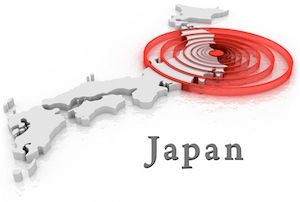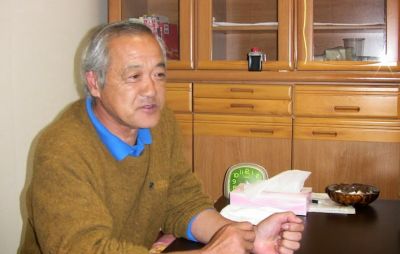davidicke May 19 2014
[youtube=http://youtu.be/o8YzzI0j4iM&w=500]

[youtube=http://youtu.be/o8YzzI0j4iM&w=500]
 Only about 5% of the directly discharged radiation was deposited within a radius of 80 kms (50 miles) from the Fukushima Dai-ichi nuclear power station. The rest was distributed in the Pacific Ocean. 3-D simulations have been carried out for the Pacific basin, showing that within 5–6 years, the emissions would reach the North American coastline, with uncertain consequences for food safety and health of the local population.[1][2]
Only about 5% of the directly discharged radiation was deposited within a radius of 80 kms (50 miles) from the Fukushima Dai-ichi nuclear power station. The rest was distributed in the Pacific Ocean. 3-D simulations have been carried out for the Pacific basin, showing that within 5–6 years, the emissions would reach the North American coastline, with uncertain consequences for food safety and health of the local population.[1][2]
After the Fukushima nuclear meltdowns in March of 2011, the International Physicians for the Prevention of Nuclear War (IPPNW), a global federation of doctors from over 60 countries that was awarded the Nobel Peace Prize in 1985, reviewed the conflicting literature and scientific data on Fukushima. They found that skewed data sources and vested interests made the information publicly available extremely distorted. Let’s have a look at data sources and governmental policies following the disaster:
– The Tokyo Electric Power Company (TEPCO), who owns the Fukushima Daiichi Nuclear Power Plant
– The International Atomic Energy Agency (IAEA), who has vested interest in nuclear energy.
The plane to Lisbon, you would like to be on it.
Why, what’s in Lisbon?
To get back to America. I’ve often speculated why you don’t return to America. Did you abscond with the church funds? Did you run off with the Senator’s wife? I like to think that you killed a man, it’s the romantic in me.
It’s a combination of all three.
And what in Heaven’s name brought you to Casablanca?
My health, I came to Casablanca for the waters.
The waters? What waters? We’re in the desert.
I was misinformed. – Reins & Bogart, Casablanca (1942)
I stand to be corrected but what I recently witnessed first hand and face to face in the city of Nihonmatsu can be interpreted as nothing other than scientific fraud and blatant misrepresentation of the facts on the part of the Japanese government regarding gamma radiation levels, leading to the early deaths of tens of thousands of residents (1). I visited a large nuclear refugee camp in a beautiful location near Nihonmatsu, a modest sized city just outside the evacuation zone of the Fukushima Nuclear Power Plant No. 1 (FNPP#1) disaster site (2).

Nihonmatsu is a typical mid-sized city in the near region of the FNPP#1 that was heavily doused with radiation from the triple meltdowns that occurred in March of 2011. Due to wind direction, the southern side of the plant did not receive nearly as much as in the northwest (3). Last summer I traveled within just a few kilometers of the FNPP#1 from the south, but readings never exceeded 0.5 microsieverts per hour (mcr sv pr hr). (Consider that 0.1 mcr sv pr hr is roughly an average dose received by a person in a normal environment).
Author and Pediatrician Helen Caldicott takes time out of her busy schedule to join me to discuss the unfolding events at the Fukushima Daiichi nuclear power station in Japan. Fukushima was devastated by a massive earthquake on March 11, 2011 which led directly to a massive failure causing hydrogen explosions which blew the roof off of at least two of the reactor buildings. Tepco and the Japanese government have understated the radiation dangers and the dire reality of the situation from day one.
[youtube=http://youtu.be/en_CiEnJ4Wo&w=500]
The nuclear crisis began on 3/11/11. While many claim that the tsunami is what caused the melt-down, it actually began during the earthquake that preceded it. Unlike Chernobyl, this is not a single melt-down, it is a triple melt-down. The molten fuel, or corium as many call it, melted through containment and into the mud-rock beneath the facility. The corium is still underground and fission is on-going.
A term commonly used to refer to run-away corium is China Syndrome. It originates from a 1979 movie of the same name. The idea is that the corium would burn through the Earth and come out the other side. While the idea in itself is a fantasy, the basic premise is happening. Nobody knows exactly what’s going to happen. There are no experts on this because it’s never happened before.
With that said, we can dig deeper into this. Lets start with the impact on the environment.
The Fukushima Daiichi nuclear crisis is, by far, the worst industrial accident of all time. It makes other industrial accidents, such as the Chernobyl melt-down or the BP oil spill, look tame in comparison.